Recent Mold Remediation Posts
Can Fire Damage Lead To Mold Growth?
1/31/2025 (Permalink)
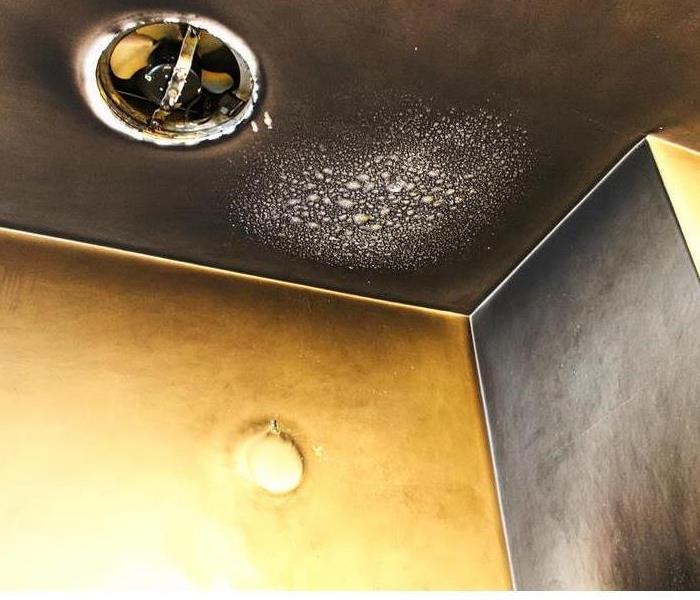 Soot can cause mold to thrive, as it's an inviting nutrient. Our team can eliminate soot, fire damage, and mold all in one!
Soot can cause mold to thrive, as it's an inviting nutrient. Our team can eliminate soot, fire damage, and mold all in one!
Many people commonly associate mold with water damage events or excess humidity. However, these are not the only things that can trigger a mold growth event! In the aftermath of fire damage, mold has the potential to thrive in the chaos. We’ll show you the biggest causes of this phenomenon below:
Water From Fire Hoses
In order for firefighters to put out a fire, they need to use excessive amounts of water from fire hoses. This can leave surfaces damp in the immediate aftermath, which creates the perfect breeding conditions for mold spores.
Burned Materials
Mold doesn’t just need damp or humid conditions to thrive! It also requires a food source, which is where burned organic materials come into play. Burned wooden structures, charred furniture, and even scorched insulation can provide suitable nutrients for mold to thrive.
Soot
There are many different types of soot that appear after fire damage. When this yucky black substance settles on the damp surfaces left over from fire hoses, it creates the perfect storm. Mold grows on damp surfaces and uses the soot around them as nutrients to foster growth.
Fire Restoration & Mold Remediation With SERVPRO
SERVPRO of Greater Hunterdon County can deal with many types of property damage, including fire damage restoration and mold remediation. If we see either of these with your property, we can get to work quickly on making them disappear! Contact our team 24/7 for damage restoration assistance!
The Differences Between Mold & Mildew
9/30/2024 (Permalink)
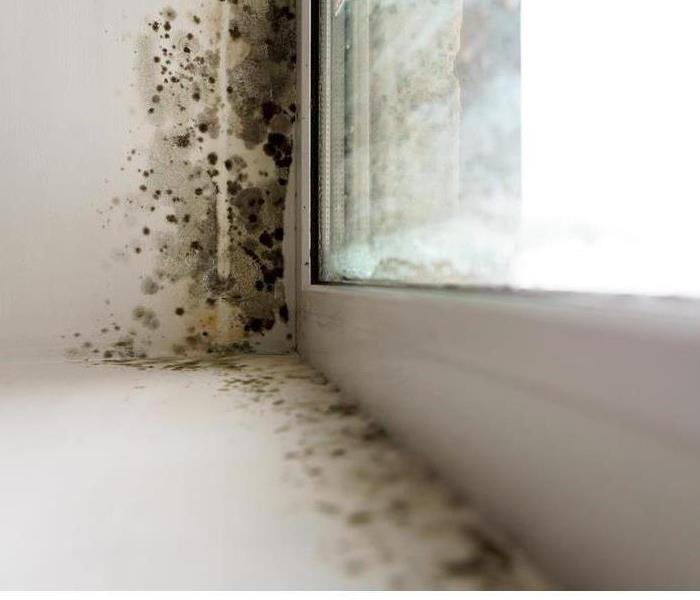 If you have unsightly mold growth like this, our team can hit the undo button with expert mold remediation work!
If you have unsightly mold growth like this, our team can hit the undo button with expert mold remediation work!
While mold and mildew may share similarities in appearance, the way you should handle them couldn’t be more different. Identifying whether a substance is mold or mildew will make a huge difference in your next steps. We’ll show you the identifying factors to look for below:
The Smell
While both mold and mildew have a bad odor, mold is significantly worse. If you smell mold, you’ll likely smell something strong and foul, like decaying meat. Mildew has an almost sour, less noticeable fragrance.
Where They Appear
If you see surface-level discoloration within your surfaces, you’re likely looking at mildew. Mildew can only appear on the surface of materials, which makes it far easier to clean and manage. Mold can appear below the surface of items like rugs, walls, and bathroom mats, which makes it a far greater concern.
The Texture
While you don’t want to touch mold or mildew with your bare hands, a thorough eye test can identify both. Mold has a more rigid and defined texture. If the surface appears bumpy or it juts out from the surface, you’re likely dealing with mold. Mildew is much flatter in texture, appearing almost like a powder.
Mold Remediation With SERVPRO®
Since mildew is considered an early warning sign of mold, you should be reacting regardless of what you find. SERVPRO of Greater Hunterdon County can successfully identify and remediate mold regardless of where it’s found. Give us a call to restore your property’s health!
Understanding Black Mold
1/23/2024 (Permalink)
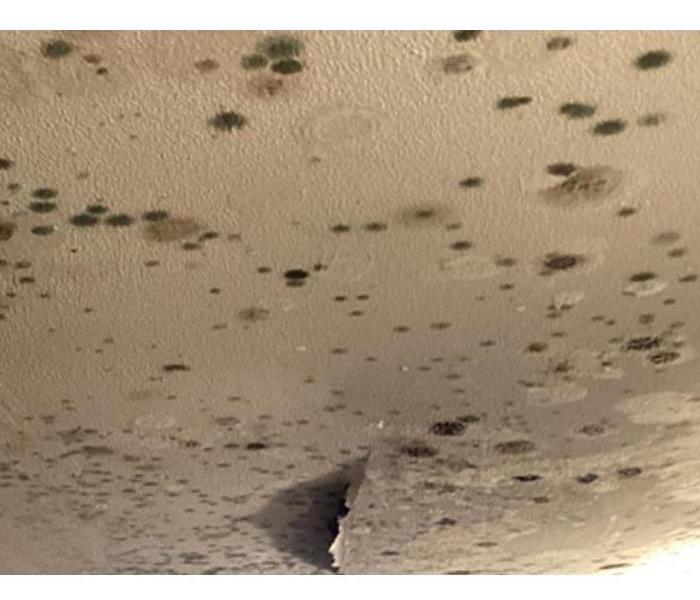 Black mold growing on ceiling, potentially compromising the integrity of the building
Black mold growing on ceiling, potentially compromising the integrity of the building
What is Black Mold, and Why is it a Concern?
Black mold, scientifically termed Stachybotrys chartarum, is a toxic mold variant that thrives in damp, humid conditions. Often characterized by its dark coloration, this mold is not just an aesthetic concern but poses significant health and structural risks. Its spores, when airborne, can exacerbate respiratory problems, allergies, and even lead to more severe health issues, particularly in those with compromised immune systems. Beyond health risks, black mold can also undermine the structural integrity of buildings, leading to costly repairs and devaluation of property. It is crucial for home and business owners to understand the gravity of black mold infestations and take proactive measures to mitigate its growth and spread.
Primary Causes of Black Mold Growth in Buildings
Understanding the root causes of black mold growth is essential for effective prevention and treatment. Black mold thrives in environments that provide moisture, organic material, and adequate temperatures.
- Moisture: The predominant factor for black mold growth is excess moisture, which can originate from several sources such as leaking pipes, roof leaks, condensation, or high indoor humidity. Buildings with poor drainage systems or those that have experienced flooding are particularly susceptible.
- Poor Ventilation: Inadequate ventilation in buildings leads to moisture accumulation, especially in high-humidity areas like bathrooms and kitchens. This lack of airflow not only supports mold growth but also prevents the drying out of damp areas, further exacerbating the problem.
- Building Materials: Black mold feeds on organic materials found in many building components like wood, drywall, and insulation. These materials, when exposed to moisture, provide the perfect breeding ground for mold.
- Temperature: Mold thrives in warm temperatures, typically found indoors. Buildings with inconsistent temperature regulation or poor insulation can have pockets of warmth that encourage mold growth.
Addressing these key factors is crucial in preventing and managing black mold in any building. By controlling moisture levels, ensuring proper ventilation, and using mold-resistant building materials, the risks associated with black mold can be significantly mitigated.
Identifying Early Signs of Black Mold
Early detection of black mold is crucial in preventing its spread and mitigating potential health risks. Being vigilant about the signs can help in taking timely action. Here are key indicators to watch for:
- Visible Growth: The most obvious sign is the appearance of dark, often black or greenish-black, splotches on surfaces, particularly in moist areas like bathrooms, kitchens, and basements.
- Musty Odors: A persistent musty, earthy smell is a strong indicator of mold presence, even if it's not immediately visible. This odor can be particularly noticeable in closed spaces or upon entering a room.
- Water Damage: Signs of water damage such as water stains, discoloration, or peeling wallpaper/paint can indicate potential mold growth areas, especially if the area remains damp.
- Health Symptoms: Unexplained allergic reactions like sneezing, sore eyes, nasal congestion, or skin irritation when at home may suggest mold presence. People with asthma or respiratory conditions may notice worsening symptoms.
- Humidity and Condensation: Excessive humidity and condensation on windows, pipes, or walls create ideal conditions for mold growth. Regular monitoring of these areas can help in early detection.
Regular inspections, particularly in prone areas, are essential in catching mold growth early. If any signs are detected, it’s advisable to seek professional assessment to determine the extent and necessary remediation steps.
Effective Strategies for Preventing Black Mold Growth
Preventing black mold growth is more manageable than dealing with its aftermath. Implementing effective strategies can significantly reduce the risk of mold infestation in any building. Here are some key preventive measures:
- Control Humidity Levels: Maintain indoor humidity levels between 30-50% using dehumidifiers and air conditioners. This range hinders mold growth.
- Enhance Ventilation: Increase airflow in high-moisture areas like bathrooms and kitchens by using exhaust fans and keeping windows open when possible.
- Immediate Water Damage Response: Address water leaks and spills promptly. The faster you dry the area, the lesser the chance for mold to grow.
- Regular Maintenance Checks: Conduct routine inspections for leaks in roofs, pipes, and walls. Early detection and repair of these issues can prevent mold proliferation.
- Use Mold-Resistant Products: When building or renovating, consider using mold-resistant drywall, paints, and building materials, especially in moisture-prone areas.
- Keep Spaces Clean and Dry: Regular cleaning and vacuuming with HEPA filters can reduce mold spores in the home. Ensure that areas like bathrooms and basements are well-ventilated and dry.
- Proper Insulation: Ensure your home is properly insulated, including windows, doors, and pipes, to reduce the chances of condensation which can lead to mold growth.
Implementing these strategies creates an environment that is not conducive to mold growth, thus safeguarding the structural integrity of the building and the health of its occupants.
Conclusion
Combatting black mold effectively hinges on awareness and proactive prevention. Recognizing the early signs and understanding the causes is vital for maintaining a healthy environment in our homes and businesses. Simple measures like controlling humidity, ensuring good ventilation, and addressing water-related issues promptly can significantly deter mold growth. Regular maintenance and vigilance are key.
Need Expert Mold Remediation? Contact SERVPRO® Today
If you're facing mold challenges in your home or business, don't wait for the problem to escalate. SERVPRO of Greater Hunterdon County's professional mold remediation services are your solution. Our team of experts is equipped with the knowledge, tools, and experience to efficiently identify, address, and prevent mold issues, ensuring your environment is healthy and safe. Trust SERVPRO of Greater Hunterdon County to provide effective, thorough, and timely mold remediation services. Read more about our mold remediation services or give us a call today!
Basement Mold Removal in East Amwell Township, NJ
3/15/2023 (Permalink)
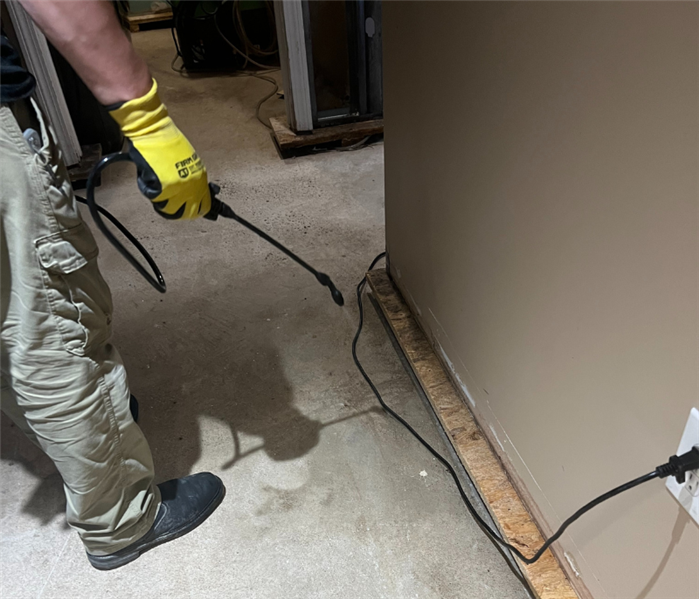 SERVPRO of Greater Hunterdon County uses advanced equipment and solutions to provide expert basement mold remediation in East Amwell Township, NJ.
SERVPRO of Greater Hunterdon County uses advanced equipment and solutions to provide expert basement mold remediation in East Amwell Township, NJ.
With its dark and damp conditions, your basement is one of the most common areas to find mold on your property.
While mold can be unsightly, it’s more than a cosmetic problem. When left untreated, basement mold can quickly spread to upper levels and even cause significant health problems. That’s why it’s important to seek remediation as soon as you discover mold in your basement.
Below, we’ve listed signs that you may have a mold issue in your basement, as well as the top causes of basement mold in East Amwell Township, NJ.
Call Today For Basement Mold Removal Near East Amwell Township, NJ - 908-788-1776
Most Common Signs of Mold in Your Basement
There are a few key indicators that you have mold in your New Jersey basement.
- Visible mold - If you’re lucky, you may be able to actually see visible mold in the form of dark spots or strains.
- Water damage - Rotting wood, flaking paint, or efflorescence on basement walls are all signs of unaddressed water damage. When moisture problems are left to sit, mold growth is likely to begin.
- Musty odors - Mold often has an unpleasant odor that smells stale or musty.
- Health problems - Mold can cause serious health issues, such as a runny nose, headache, chest tightness, and shortness of breath.
What Causes Basement Mold?
Mold thrives in dark environments with a lot of moisture in East Amwell NJ. Unfortunately, your basement is a top place for water damage to occur.
- High humidity with lack of dehumidifier
- Insufficient insulation
- Previous flooded basement
- Sump pump failure
- Water leaks from upper levels
- Cracks in your foundation or water seepage
Professional Basement Mold Remediation in East Amwell Township, NJ
IICRC Certified
Full Cleaning & Sanitizing
Free Mold Inspections
When you discover mold in your basement, you want to remediate it as soon as possible. If basement mold problems go unaddressed, they are likely to spread to other areas in your home.
As your local mold remediation company with over 15 years of experience in basement mold removal near East Amwell Township, you can trust SERVPRO of Greater Hunterdon County to handle any size mold problem. Our IICRC Certified specialists have all of the training and experience to understand how mold grows and thrives, as well as how to properly get rid of the mold in your basement.
When you call SERVPRO of Greater Hunterdon County for basement mold remediation in East Amwell Township, NJ, our team is ready to make the mold in your basement “Like it never even happened.”
Call To Schedule A Free Estimate For Basement Mold Removal in East Amwell Township, NJ - 908-788-1776
Attic Mold Removal in Lambertville, NJ
6/7/2022 (Permalink)
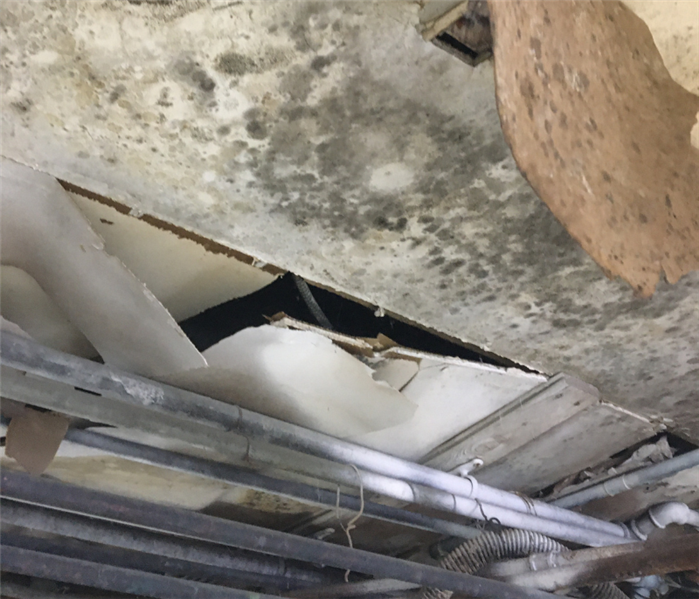 When you find mold in your attic, SERVPRO of Greater Hunterdon County is here to provide a free remediation estimate!
When you find mold in your attic, SERVPRO of Greater Hunterdon County is here to provide a free remediation estimate!
Mold in Your Attic? Get A Free Remediation Estimate Today!
Did you know that your attic is one of the most common places to find mold? Attics typically create the perfect environment for mold to grow, but since homeowners don't frequently use their attics, mold issues usually aren't caught until they've become severe or discovered in a home inspection.
When you find mold in your attic space, SERVPRO of Greater Hunterdon County is here to provide a free inspection and estimate for attic mold removal near Lambertville!
Call Our Office To Schedule A Free Estimate - 908-788-1776
Professional Attic Mold Remediation in Lambertville, NJ
IICRC Certified
Full Cleaning & Sanitizing
Free Mold Inspections
When you need attic mold removal services, you want a company you can trust to get the job done right, and make sure that mold doesn't spread to other areas of your home.
With over 15 years of experience in attic mold removal near Lambertville and the surrounding areas, SERVPRO of Greater Hunterdon County is ready to handle any size mold problem. Our IICRC Certified mold removal specialists understand how mold forms, grows, spreads, as well as how to properly remediate the issue to prevent future mold growth.
When you call SERVPRO of Greater Hunterdon County for attic mold removal in Lambertville, NJ, our goal is to make your mold issue "Like it never even happened."
Common Causes of Attic Mold Growth
Mold only needs three things to grow and spread: moisture, organic matter (building materials), and warm enough temperatures. There are several things that create this perfect environment for attic mold growth:
- Roof leaks
- Improper ventilation
- Lack of proper insulation
- Leaks in HVAC ductwork
- Exhaust fans letting go into attic
- High levels of humidity
Attic Mold Remediation Process
Your local SERVPRO in Lambertville, NJ will create a unique plan for each attic mold remediation in Lambertville, NJ, but the general process remains the same.
1. Inspection and Mold Damage Assessment
Our Project Manager carefully inspects your property for visible signs of mold to create a plan for complete attic mold removal in Lambertville, NJ. They will also take moisture readings to determine if a moisture problem needs to be addressed to prevent future mold growth. SERVPRO of Greater Hunterdon County does not provide mold testing services.
2. Mold Containment
Our team uses various mold containment methods to prevent the spread of mold spores throughout your property during the remediation process. This step is usually completed with physical barriers and negative air pressure to isolate the contaminated area. We'll also turn off the property's fans and heating and cooling systems.
3. Air Filtration
Our professionals at SERVPRO of Greater Hunterdon County use specialized filtration equipment to remove microscopic mold spores from the air. Our team also uses powerful air scrubbers and HEPA vacuums to prevent the spread of mold or lingering spores after the remediation process is complete.
4. Removing Mold and Mold-Infested Materials
The mold remediation process can vary depending on the amount of mold growth and types of surfaces affected. Some mold-infested porous materials, like drywall and carpeting, may need to be disposed of to remediate heavy mold growth.
5. Cleaning Contents and Sanitizing
Our team uses a variety of techniques to clean and disinfect your furniture, clothing, and other restorable items affected by the mold. We also use antifungal and antimicrobial treatments to eliminate mold colonies and help prevent new ones from forming. Our crew can also remove odors and provide deodorization using fogging equipment.
6. Restoration
The final step in your attic mold remediation in Lambertville, NJ is getting your home or business back to normal. Since it's often necessary to remove porous building materials like subfloors, drywall, and carpet during the remediation process, our in-house construction division takes over to fully restore your property. The restoration step may involve minor repairs, such as replacing a few drywall panels, or could include major reconstruction of various areas in your property.
Call Today To Schedule A Free Mold Estimate - 908-788-1776
How An Ice Dam Causes Mold in Your Lebanon, NJ Home
12/8/2020 (Permalink)
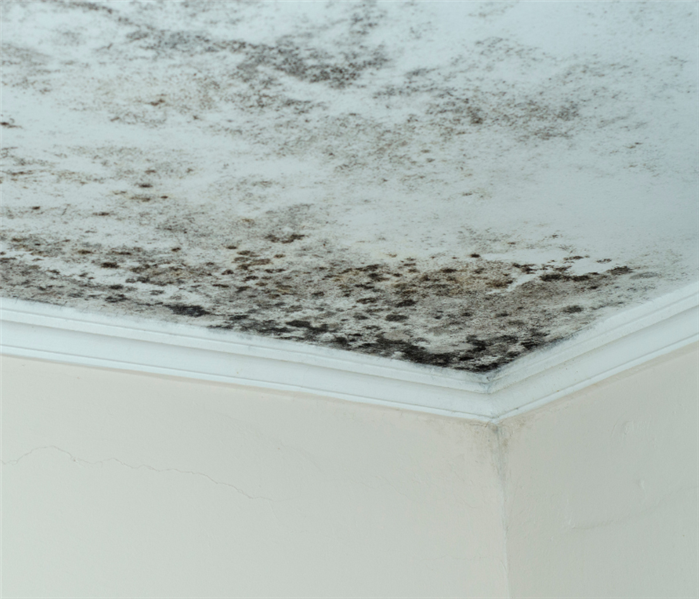 Ice dams can cause mold to grow on your ceilings, walls, floors, carpet, and even in the insulation of your home.
Ice dams can cause mold to grow on your ceilings, walls, floors, carpet, and even in the insulation of your home.
Mold growth during the winter is something most homeowners don't have to worry about. But when ice dams form on the roof of your home, mold growth becomes a high possibility. Learn everything you need to know about how ice dams cause mold in your New Jersey home here.
How Do Ice Dams Form?
Ice dams form when the temperature of your attic is above freezing, melting the snow and ice on your roof. This snowmelt runs down and refreezes at the edge of your roof, as it isn't warmed by the attic and has a cooler temperature. This causes large areas of ice to form at the edge your roof and along the gutters, which prevents melting snow from draining and causes the problem to become worse.
These can also form when there has been heavy snow and the warmth of the sun causes the same phenomenon to occur. This is because large amounts of snow will get pooled in the gutters and then freeze into a large block when the sun sets and temperatures cool.
Why Do Ice Dams Cause Mold?
Ice dams cause mold because of the water leaks and water damage they cause to your home. Snow and ice continually melting and refreezing on your roof will cause water to get behind shingles and shift them when it refreezes. Over time, this will cause water leaks in the roof and attic of your home. You may notice wet ceilings, walls and insulation, water stains, buckling of walls or floors, and bubbling paint or wallpaper.
When water enters your home, it creates the perfect environment for mold to grow. This is because mold thrives on moisture and grows quickly as long as it has warm enough temperatures. The mold feeds on the materials of your home - the wood, drywall, wallpaper, carpets, insulation and other areas can all be affected by mold growth.
How Can You Prevent Ice Dams?
The problems caused by ice dams can be avoided if you take the proper steps. Dealing with water damage and mold growth in your Lebanon, New Jersey home can be a major headache and be costly to remediate.
You can help prevent ice dams and mold growth by:
- Making sure your gutters are clean and free of debris so melting snow can be drained away
- Providing proper ventilation in your attic so that your roof stays cool
- Making sure no exhaust fans discharge in the attic - make sure they lead outside to preventing warming the roof
- Taking steps to properly insulate your attic from the rest of your living spaces so that warm air doesn't escape up to it
- Making sure any ductwork in your attic is well-sealed
- Taking steps to clear snow off your roof, using a roof rake before it has a chance to melt and refreeze
 Soot can cause mold to thrive, as it's an inviting nutrient. Our team can eliminate soot, fire damage, and mold all in one!
Soot can cause mold to thrive, as it's an inviting nutrient. Our team can eliminate soot, fire damage, and mold all in one!


 24/7 Emergency Service
24/7 Emergency Service




